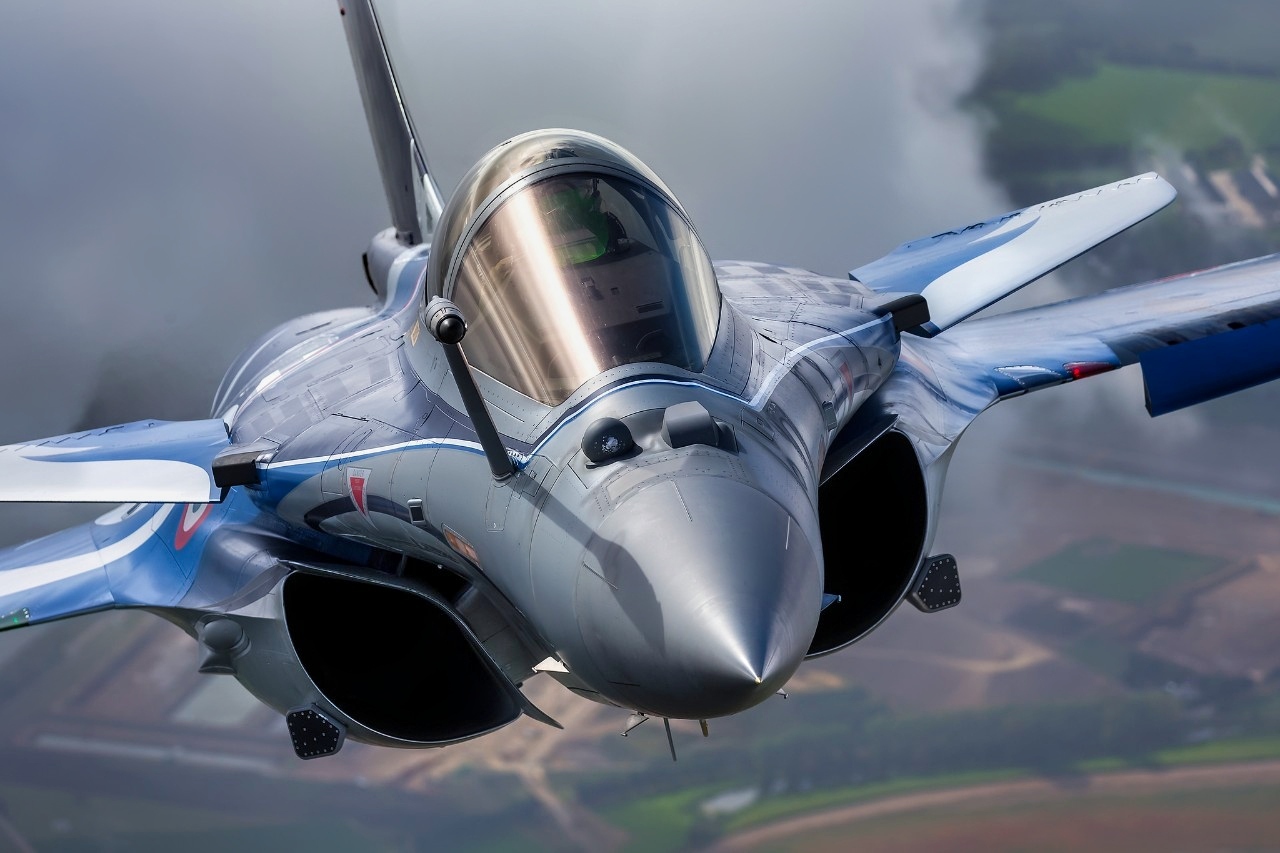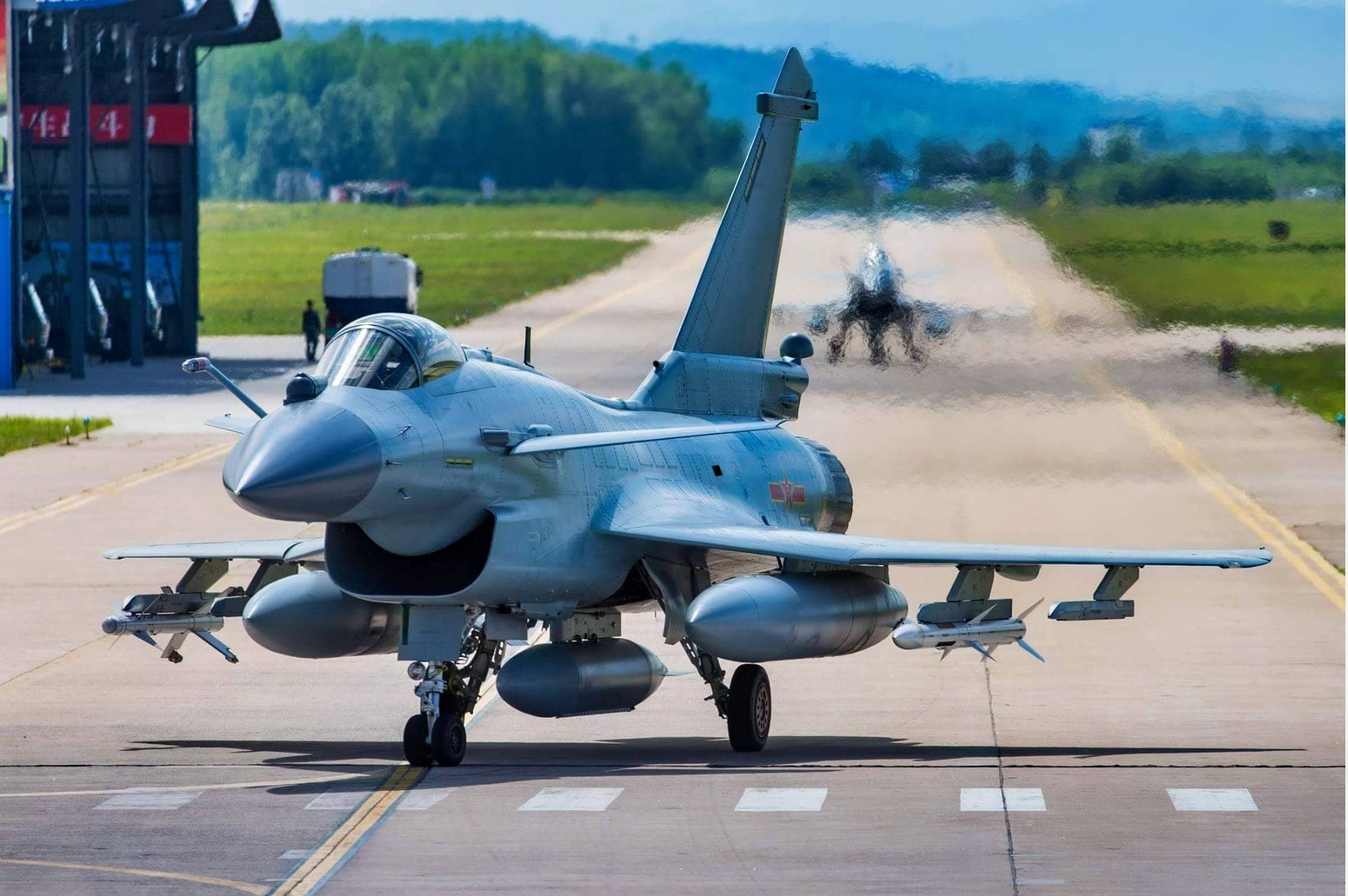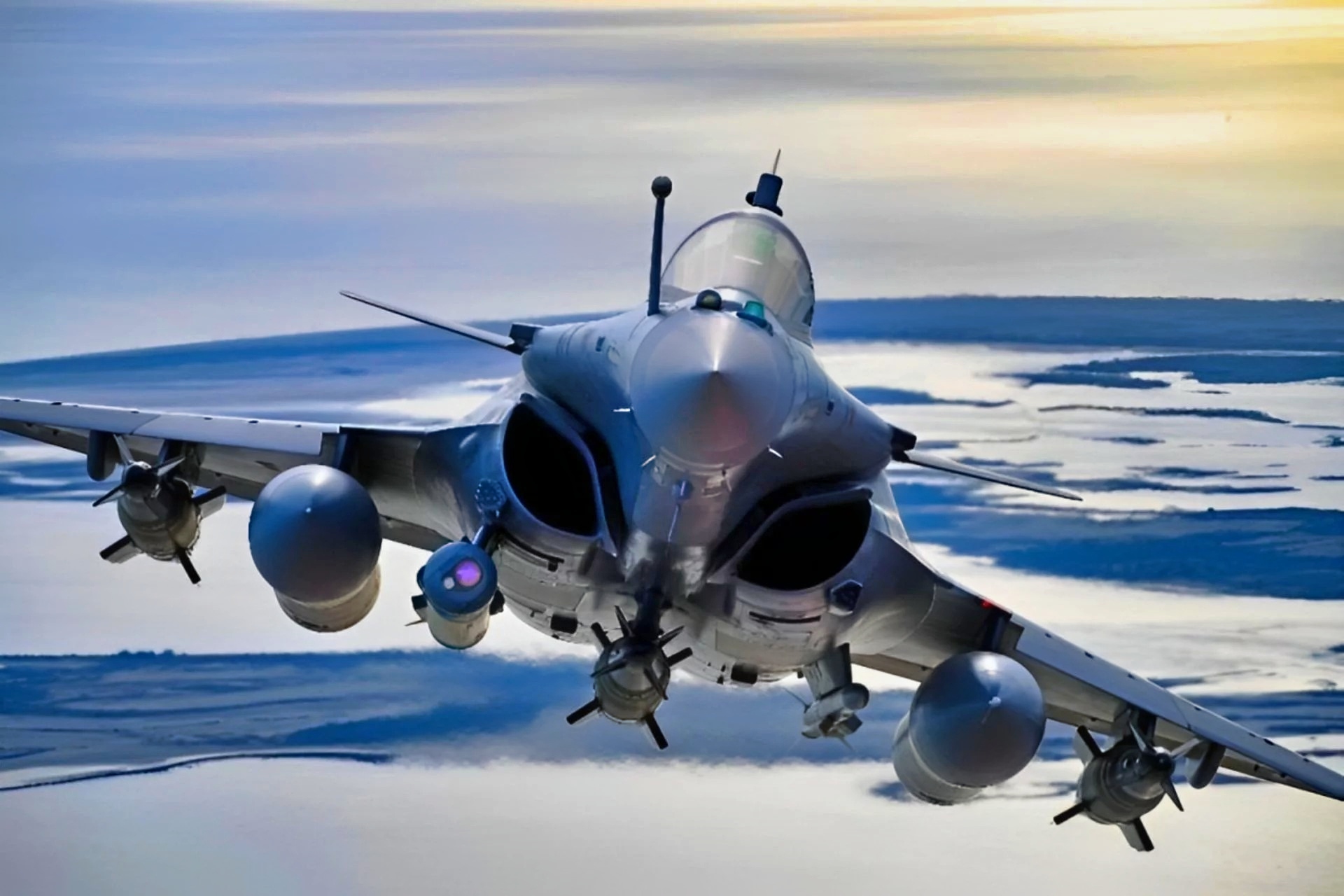Key Points – On May 7, India’s air force launched Operation Sindoor, targeting militant-linked sites in Pakistan. Despite employing cutting-edge Dassault Rafale fighters and advanced missiles, photographic evidence indicates Pakistan’s Air Force downed multiple Indian jets—including at least one Rafale—without confirmed losses.
-Key to Pakistan’s success were Chinese-supplied J-10CE and JF-17 jets, powerful PL-15 missiles, and Swedish-made Erieye AWACS aircraft. Unlike past simulations like Cope India, this battle showcased real-world networked warfare, emphasizing beyond-visual-range missile effectiveness and AWACS coordination.
-The clash underscores the importance of electronic warfare, intelligence, and long-range missile capabilities, prompting reconsideration of India’s air combat preparedness against an increasingly sophisticated adversary.
Pakistan’s J-10 Fighter vs. India’s Dassault Rafale
On May 7, dozens of Indian Air Force (IAF) warplanes carried out strikes on militant-affiliated targets in Pakistan in retaliation for a murderous terror attack in April that killed 26 tourists in Kashmir. The raid triggered a battle with the Pakistan Air Force (PAF) that according to some reports involved 125 aircraft.
A few days later, photographic evidence increasingly suggests the PAF managed to shoot down a few Indian jets over Indian soil, without having suffered any confirmed losses of its own. (Indian press reports the downing of an F-16 and JF-17s, but photographic evidence is lacking for now.)
This outcome may seem curious, given the IAF’s past successes during air-to-air exercises with the U.S. Air Force in Cope India. To understand why the PAF may have performed relatively well, it is necessary to consider capabilities those exercises didn’t simulate, as well as the IAF’s approach to the raid itself, codenamed Operation Sindoor.
Operation Sindoor
The IAF was undoubtedly ready to revisit the field after tit-for-tat cross-border air raids in 2019 culminated in the downing of a dated Indian MiG-21 fighter by a Pakistani F-16, the capture of its pilot, and the accidental friendly-fire downing of an Indian helicopter.
This time, India’s air force seemingly ensured its most advanced combat aircraft were leading the way, including French-built Rafale jets carrying SCALP-EG subsonic cruise missiles and HAMMER-250 guided glide bombs, and powerful Russian-designed Su-30MKI ‘Flankers’ lugging supersonic BrahMos cruise missiles.
These weapons were launched while still over Indian airspace, and they successfully struck ground targets in Pakistan (with a notable exception detailed below). But in the ensuing air battle, Pakistan’s defenses proved better prepared and better armed.
Discerning real on-the-ground imagery amid a torrent of propaganda, which included intentional disinformation presenting photos of past crashes as current events, proved remarkably difficult. But eventually, wreckage near Bathinda revealed the IAF had lost a Rafale BS-001—the first model of Rafale delivered to India, and the first ever lost in combat. (Both U.S. and French sources reported this loss to media and assert it was dealt by a PAF J-10 jet.) Sadly, the Rafale crash killed one civilian and injured nine more.
Further, apparent photos of a Russian-origin K-36DM ejection seat and a shattered French missile pylon recovered at other locations suggest possible loss of one or two more Indian fighters: most likely a two-seat Su-30MKI jet or a MiG-29, and perhaps (though with less confidence) another Rafale or a Mirage 2000H.
K-36DM ejection seat of the downed Indian MiG-29 https://t.co/Gtwp2Vw5B2 pic.twitter.com/3YgfbxbzIH
— 𝔗𝔥𝔢 𝕯𝔢𝔞𝔡 𝕯𝔦𝔰𝔱𝔯𝔦𝔠𝔱△ 🇬🇪🇺🇦🇺🇲🇬🇷 (@TheDeadDistrict) May 7, 2025
Why Cope India wasn’t a great test of beyond-visual-range air combat
In the 2000s, historically chilly relations between New Delhi and Washington turned decisively for the better, giving way to increased military cooperation. That included the Cope India series of exercises, which, starting in their 2004 iteration, gave American F-15 pilots a chance to test their tactics and technology against Indian counterparts flying a diverse stable of Soviet/Russian and French jets.
The reports that emerged from Cope India proved surprisingly unflattering to the world’s most powerful air force—U.S. pilots lost 90 percent of the engagements in 2004. The following year, F-16s also underwhelmed.
American accounts state the Indians displayed creative tactics and a high degree of coordination, emphasizing that IAF pilots found ways to get their antiquated (but upgraded) MiG-21 jets into knife-fighting range, where their short-range R-73 missiles put them on more even terms with the more modern American fighters.
There’s no doubt U.S. pilots were unprepared for the prowess and creativity of their Indian opponents, and the Air Force used these outcomes to argue it was dangerous to grow complacent about its air warfare dominance.
But certain conditions of the Cope Indias limited realism—namely, the U.S. jets were typically outnumbered 3:1, they were unsupported by AWACS early-warning planes, and they could not use their long-range missiles at ranges exceeding 21-25 miles.
The latter two conditions were imposed because neither side wanted to expose the full capabilities of their radars and missiles to the others’ sensors. But it means the exercises didn’t simulate how air forces armed with long-range missiles and AWACS aircraft would really fight.
What actually happened in the huge Indo-Pakistan air battle of May 7, 2025?
Despite the prevailing fog of war, there are now ample clues suggesting the PAF’s performance on May 7 arises from effective use of long-range missiles and AWACS aircraft to form a spotter-shooter-missile kill chain that could threaten Indian fighters even dozens of miles deep into Indian-controlled airspace.
Notably, in 2021 Pakistan imported its first advanced Chinese fighters: single-engine Shenyang J-10CEs with stealthy, jam-resistant active electronically scanned array (AESA) radars and compatibility with China’s world-class air-to-air missiles. It also upgraded its burgeoning fleet of JF-17 Thunder jets to the Block III model compatible with long range missiles. (The Thunders are a joint China-Pakistan design mating a modern engine and F-16-style avionics to an evolved MiG-21/F-7 airframe.)
Finally, China apparently rushed delivery to Pakistan of the export model of its best air-to-air missile—the PL-15E, which has a dual-pulse motor, satellite navigation and an AESA radar seeker. Though the export PL-15E has only around half the maximum range of domestic PL-15s (90 miles, rather than 180), it still exceeds the range of most missiles used by Indian fighters, save the Meteors carried by India’s Rafales.
Pictures are out of the #Pakistan Air Force’s JF-17 Block III carrying the PL-15 Very Long Range Air-to-Air Missile (VLRAAM) for the first time!
The PL-15 has a maximum range of 200 kilometres, a significant jump over the earlier PL-12 which was on the JF-17 (100 KM). pic.twitter.com/UznOCJPc3r
— The STRATCOM Bureau (@OSPSF) April 26, 2025
The PAF benefited from another special weapon: Swedish airliners—specifically, Saab 2000s fitted with Erieye radars to serve as AWACS aircraft able to detect and track hostile aircraft out to 280 miles, including low-flying aircraft masking themselves against terrain. These also help coordinate the response by friendly fighters and can even allow these jets to operate more stealthily with their own radars off.
Moreover, as China uses the Erieye too, its PL-15 missiles were designed to network with the radar via two-way datalink. That means a Saab 2000 AWACS orbiting safely backfield can transmit guidance instructions to PL-15 missiles fired by Pakistan’s J-10 and JF-17 fighters, even if those jets keep their radars off. This method also can deny targeted aircraft warning of the missile’s approach until the final terminal phase, when the missile’s active seeker turns on to complete the intercept.
While the IAF has the needed ingredients to form long-distance kill-chains as well, using Rafales, Meteor missiles, and Embraer AWACs jets, there is not yet confirmed proof of any successes.
Still, air warfare over Ukraine has shown that even outdated fighters, if sufficiently forewarned, can evade long-range missiles. And given the many aircraft involved, it’s possible Pakistani and Indian fighters launched dozens of air-to-air missiles, with only a tiny number reaching their mark.
There remains much we don’t know about the May 7 battle, and additional losses suffered by either side may eventually be revealed. But we do know wreckage from two PL-15 missiles was discovered 60 miles into Indian territory; that one Indian Rafale crashed in India; and that debris found elsewhere offers compelling but not conclusive evidence of a lost Russian-designed fighter, and possibly of a third jet.
In addition, parts from two jettisoned BrahMos missiles found east of India’s Sirsa airbase suggest some Indian Su-30MKIs may have been assailed by long-range missiles shortly after taking off, compelling evasive maneuvers eastward and ditching of the heavy BrahMos.
The impact of Pakistan’s and India’s ground-based air defenses (including Chinese HQ-9s and Russian S-400s, respectively) on May 7 remains murky. One analyst argues the IAF didn’t muster adequate electronic-warfare assets for the operation, which could have degraded the effective range of Pakistani missiles—and that Indian communications lacked encryption and proved vulnerable to Pakistani jamming.
Possible errors aside, it’s also worth considering how political dynamics constrained planning for India’s air raid. In a wartime combat operation, smart air forces suppress enemy ground-based air defenses and sweep away enemy fighters in advance of, or at least concurrently to raids by strike aircraft targeting primary objectives.
But as these nuclear-armed states were not in a state of open war, New Delhi’s plan to control escalation was to target only non-military militant targets, even if retaliation from Pakistan’s military would surely follow. This meant conceding the first shot to Pakistan’s air force.

Dassault Rafale Fighter. Image Credit: Creative Commons.
Whether or not India achieved desired effects from its strikes, the mediatic buzz resulting from the aircraft loss has arguably undermined the operation’s political goals.
Following the raids, Pakistan and India have spent days exchanging large-scale artillery bombardments and drone attacks, including 120 Israeli Harops-2 kamikaze drones targeting Pakistani air defenses, and more than 300 much smaller Turkish Songars launched by Pakistan on the border.
So far, neither side seems keen to attempt more large-scale raids by manned jets. Drone expenditures have much less political salience than losing expensive fighters invested with national glory, and with people inside them. However, that could change should the conflict escalate or drone attacks create exploitable air defense gaps.

J-10C Fighter from China. Image Credit: Creative Commons.
Overall, the May 7 battle reaffirms the dominance of network-centric beyond-visual-range combat in 21st-century air warfare, and the importance of accurately assessing an adversary’s capabilities and tactics—preferably before the shooting starts. It also highlights how exercises like Cope India don’t usually simulate every aspect of real conflicts.
About the Author: Sebastien A. Roblin
Sébastien Roblin writes on the technical, historical, and political aspects of international security and conflict for publications including The National Interest, NBC News, Forbes.com, War is Boring and 19FortyFive, where he is Defense-in-Depth editor. He holds a Master’s degree from Georgetown University and served with the Peace Corps in China. You can follow his articles on Twitter.

